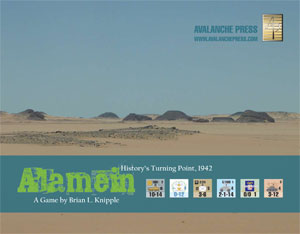| Alamein:
Indians
and Gurkhas
By David Hughes
July 2017
 Some claim that the best Allied infantry
divisions of the Second World War were the
4th and 5th Indian. Although the 2nd New Zealand
also deserves to be considered, I think they
have a point. Some claim that the best Allied infantry
divisions of the Second World War were the
4th and 5th Indian. Although the 2nd New Zealand
also deserves to be considered, I think they
have a point.
The choice of the Indian divisions can be
justified by length of service — both
fought more or less continuously from late
1940 until the end of the war — and
by the number of enemies engaged. The 4th
Indian Division tackled the Italians, Germans
and Communist Greeks. The 5th Indian Division
did not meet the Communists, but instead engaged
both the Vichy French and the Japanese. Interestingly,
divisional histories suggest that the Italians
and Vichy French were their most determined
adversaries.
They were at their most formidable in the
early years of the war. A classic example
is the Wavell offensive against the Italians
in December 1940, when the 4th Indian, with
the help of Matilda tanks, broke the main
defences. Then the Indians were removed for
more serious fighting in Ethiopia, leaving
the inexperienced troops of the 6th Australian
Division to mop up the remaining Italian forces.
This is not surprising, as the two divisions
had a higher concentration of experienced regular
soldiers than any other. Most British (remember
that they formed about half the fighting strength)
and Indian units had recently fought, and defeated,
the tribesmen of the North-West Frontier. Unlike
some Indian battalions, which fell to pieces
when facing the Japanese in late 1941, the 4th and 5th had not been diluted with new,
virtually untrained recruits.
Even so, until 1942 they did not contain
a single Gurkha battalion! Today there is
a temptation to think of the Gurkha units
as being the best troops in an Indian division,
probably because they remained in British
service when India became independent. (It
also helped that the best-selling author,
John Masters, was a Gurkha battalion commander.
If you want to get a true picture of the Indian
army from the start till its end, you cannot
do better than read any of his books, whether
fiction or biography.) In truth, a Gurkha
battalion could be better or worse than an
Indian one — it all depended on training
and leadership.
In the early years of the war, battalions
were drawn from the Hindi and Muslim regiments
of the Indian Army, units with titles like
the Rajputana Rifles, the Mahratta Light Infantry
and the Frontier Force Regiment. They all
belonged to what the British called “the
martial races,” almost all from the
Punjab, the Frontier and Rajputana. In those
times quality was defined in terms of racial
characteristics, and the British preferred
people who looked like what they thought a
warrior should be — preferably tall
and not too dark in skin colour.
Of course, a Gurkha from the Himalaya foothills
was the exact opposite, short and dark skinned,
but the British respected them because they
had given them such a hard time in battle.
(Before we criticise too much, observe the
tendency in some armed forces today to prefer
very tall and bulky pilots and tankers, the
exact opposite of what would logically be
the choice!)
By 1942 the picture was changing. The original
tough cadre of both Indian and British battalions
was dwindling, due to casualties and removal
to train new units. In the period covered
by Desert
Rats the Indian divisions had become
less reliable. The “martial race”
idea now began to be a problem. All Indian
soldiers were volunteers, so by using only
a small section of the Indian population,
a shortage of good recruits soon became apparent.
To make matters worse, there were not enough
British officers that spoke the various native
languages. In the long term both problems
were solved, one by calling on new groups
the other by promoting Indian officers. But
in 1942 Indian divisions could no longer be
considered the most reliable in the desert.
Tobruk fell to Rommel in 1942 when three reformed
Indian battalions, full of raw recruits, collapsed
before the Afrika Korps attack.
Owners of Alamein will now understand why there are no complete
Indian divisions present. Montgomery and Alexander
(both generals from the British, not the Indian
armies) had listened to stories that blamed
recently-arrived Indian troops for the collapse
at Gazala and after, and decided that they
could not be trusted.
When the victorious 8th Army reached the hills
of Tunisia all this changed. Some staff officer
finally remembered that most Indian troops
were trained in mountain warfare. The scattered
brigades of the 4th Indian Division were quickly
dragged from garrison duty and brought to
the front.
By the time the Allies were fighting their
way up the Apennine mountain range of Italy
the lesson had been learnt, and among the
most effective units were the elite all-Gurkha
43rd Indian Brigade — responsible for
many of the hair-raising stories about their
exploits with the kukri battle-knife; I always
liked the tale about their habit of slitting
the throat of all the sleeping Germans they
found, except for one — and the 4th,
8th and 10th Indian Divisions.
Click here to order Alamein right now!
|
